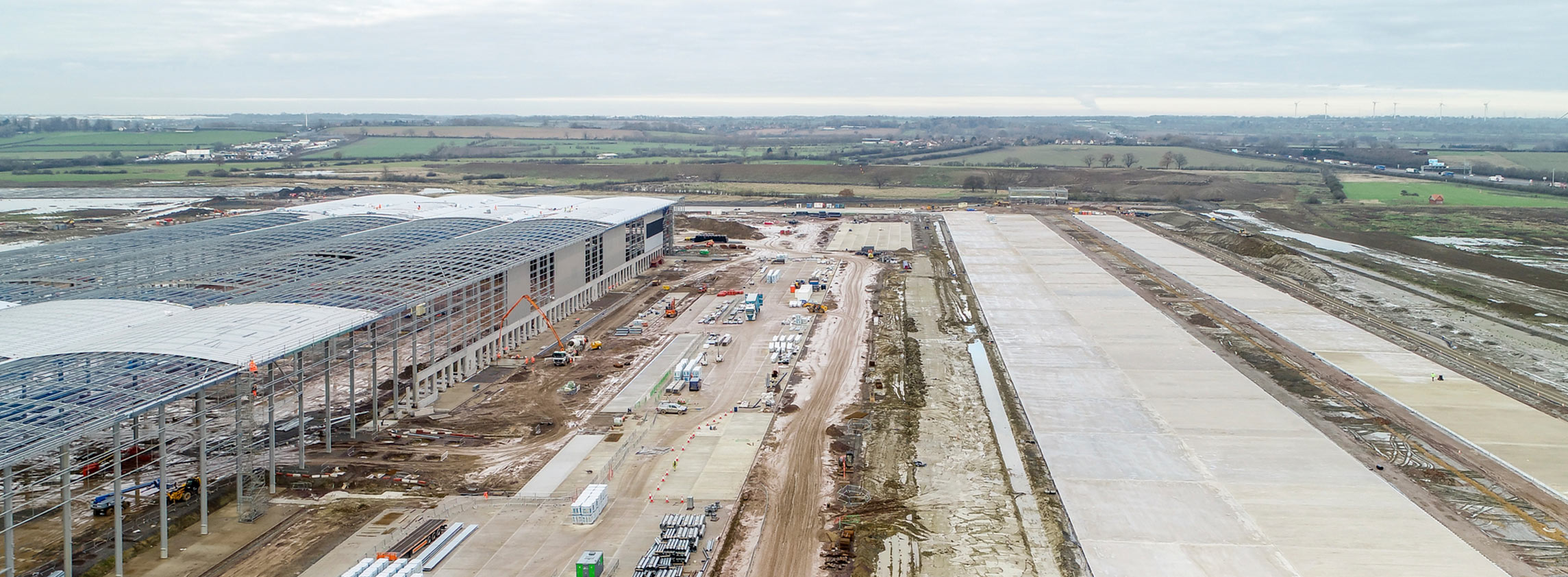Nationwide overview
A record-breaking year for take-up has reduced vacancy rates to 5.70%

A record-breaking year for take-up has reduced vacancy rates to 5.70%
Since our last market update in July 2020, it seems that in many respects we have come full circle as restrictions have been lifted only to be reintroduced as Covid-19 cases continue to rise in the cold winter months. As before, the challenges in a personal and professional capacity are unprecedented, and the clear focus remains on staying safe and saving lives. What has become increasingly clear, just from keeping abreast of the news flow over the Christmas period, is that the logistics sector has never been so vital to everyone’s day-to-day lives.
Firstly, online retail continues to be many people’s lifeline to keeping lives as close to normality as possible and, whilst we await official figures from the ONS, data from IMRG showed that online retail was 51% higher in early December 2020 when compared with December 2019.
Secondly, we saw how quickly events at our border caused supply chain delays and the return of food rationing by a number of the main supermarkets in the run-up to Christmas. Businesses will be relieved about the fact that a trade deal was agreed covering our future trading relationship with the EU, but it should be noted that this trade deal creates barriers to trade, rather than removing them. Therefore, as the dust settles, it is possible that we will see companies look to restructure their supply chains to gain greater operational efficiencies.
Thirdly, as the world prepares to roll out a number of Covid-19 vaccines, there has been much discussion as to the suitability of our temperature-controlled supply chain. In reality, we expect there to be little impact on the big box sector when it comes to vaccine distribution, but all of the aforementioned factors are combining to give the logistics sector a profile in the mainstream which has the potential to promote the sector to policymakers for years to come.

Littlebrook in Kent, where Amazon have committed to a 2.3m sq ft unit. The largest ever deal within the M25
Take-up
Whichever metric we use, 2020 breaks all previous records with new leases signed for 50.1 m sq ft of warehouse space, 12.7m sq ft ahead of the previous record set in 2016 and also comprising 165 separate transactions, breaking the previous record of 163 set in 2014. Whilst it is important to say we have seen a large proportion of space leased to Amazon (25%) and a number of leases on terms less than five years (12%), take-up would still break new records even if Amazon and short-term deals were removed from our time series.
Another key factor of 2020 has been the surge in take-up for units over 500,000 sq ft with 25 deals recorded, making it the highest year since our records began and also more than the previous two years combined. Given the number of requirements currently in the market for units over 500,000 sq ft, this is a trend we expect to continue into 2021.
Supply and Pipeline
Over the last 12 months, supply has fallen by 3.8m sq ft to 32m sq ft reflecting a vacancy rate of 5.70%, which has been aided by the fact that we have seen 10.8m sq ft of deals for space developed speculatively, the highest level ever recorded. The strong levels of take-up have rapidly depleted Grade A supply which now stands at 12.9m sq ft accounting for 41% of total supply, its lowest level since 2017 and a fall from 55% of total supply just 12 months ago.
We are currently tracking 8.19m sq ft of speculative development due to reach PC in 2021 which given current take-up levels will largely maintain supply and vacancy broadly at its current level.
Read the articles within Big Shed Briefing below.
10 article(s) in this publication